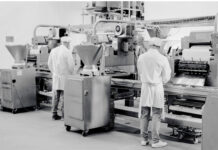 If it is true that the main purpose of food processing industry is to preserve food from foreign agents which may deteriorate its nutritive properties and organoleptic characteristics with possible consequences for human health, it is equally true that one cannot fail to ascribe at least two other functions to the modern methods of food processing and packaging. In addition to health and hygiene, therefore, one should take into account also the social and economic functions of these processes. As a matter of fact, preserving techniques allow food consumption also in places and at times that are different from those of production, which has easy-to-understand economic and social implications: modern preservation and packaging techniques allow meeting the needs of modern life by offering consumers ready-to-use products which can be consumed in a very short time, whenever they wish. In this scenario, technological innovations in the field of aseptic packaging play a major role because they aim both at sanitary and socio-economic goals: improvement of products’ organoleptic and nutritional properties, major safety from the microbiological point of view, as well as better distribution and marketing of preserving industry products.
If it is true that the main purpose of food processing industry is to preserve food from foreign agents which may deteriorate its nutritive properties and organoleptic characteristics with possible consequences for human health, it is equally true that one cannot fail to ascribe at least two other functions to the modern methods of food processing and packaging. In addition to health and hygiene, therefore, one should take into account also the social and economic functions of these processes. As a matter of fact, preserving techniques allow food consumption also in places and at times that are different from those of production, which has easy-to-understand economic and social implications: modern preservation and packaging techniques allow meeting the needs of modern life by offering consumers ready-to-use products which can be consumed in a very short time, whenever they wish. In this scenario, technological innovations in the field of aseptic packaging play a major role because they aim both at sanitary and socio-economic goals: improvement of products’ organoleptic and nutritional properties, major safety from the microbiological point of view, as well as better distribution and marketing of preserving industry products.
A little history
Aseptic packaging has represented a true revolution in the production and commercial sector of the food processing industry: just think about the increased consumption of drinks in brik and tetra to understand the impact of this technology on modern society. The success of this technique is due to the final result of the process: the efficiency of the aseptic process allows preserving the flavor of all products and nutrient compounds, so that the quality of the final product turns out to be greater than that resulting from the traditional thermal process. Over the years, keeping pace with technological change, terminology has also developed, so that the term “aseptic” no longer refers only to a particular type of packaging, but to a true technology, in which preparation, sterilization and packaging of the product are strictly interdependent, selected and combined according to the characteristics of the product itself and the container. And there is more. In recent years, even the packaging industry has undergone a significant development linked to the market’s need to dispose of products with long shelf life, low content of preservatives and better and better organoleptic characteristics. Given such requirements, plants have become increasingly sophisticated. Research, however, is still working to face the limits of current plants. One of the many needs is to find the right system for the right product, trying to cope with the weaknesses highlighted so far.
The reasons which have led to the success of aseptic packaging technology are clear: this technology makes it possible to keep safety, freshness, taste, color and nutritional properties of food intact for quite a long time, without chilling them and without using preservatives. This is possible because the aseptic packaging system ensures food and packaging materials against bacteria during the packaging process. That is why any element in the production chain must be made commercially sterile: food, packaging material, all machinery and the environment in which packaging is performed. Currently, very complex installations are available on the market: they consist of a section for product sterilization and cooling, a section for container sterilization, and an aseptic system for the container’s filling and closing. In these processes the main difficulty lies in packing the so-called heterogeneous products, which feature both a liquid and a solid phase. In this regard, most of the plants for the aseptic packaging of heterogeneous products are substantially of two types: single circuit – in which the solid-liquid mixture is treated and dosed as if it were a single phase – and double circuit – in which the treatment of liquids and solids takes place in separate lines and the mixing takes place only immediately before filling in the package. Aseptic packaging of heterogeneous products, however, has a number of issues related to the differences between the liquid and the solid phase. Among others, there is risk of flaking for the solid part during its treatment, risk of separation between the two phases, time difference in resistance between the two phases. These difficulties have stimulated research to look for innovative technical solutions in order to enable process optimization.
Future scenarios
During the aseptic packaging process, the filling phase is considered among the most delicate from the point of view of sanitation, as well as one of the most relevant for the actual quality and yield of the system. Over time, the most widely used filling technique is the volumetric one, with use of electromagnetic flow meters. However, this technique has limitations, especially when used with fluids characterized by high viscosity and containing pieces. In these cases, volumetric filling is difficult to manage: therefore, researchers are currently working to assess new possible filling systems that have improved also from a practical point of view if compared to traditional systems and capable of better preserving the organoleptic characteristics of the products with pieces. A further issue on which both the academic and non-academic institutions are committed to find new solutions aims at the optimization of the entire process: from filling to packaging, through product sterilization. This approach requires an overall consideration of the entire packaging system, and implies changing the design parameters related to the dimensioning and proportioning of the entire plant. In other words, one should consider the process as a whole and therefore, the sterilization phases of the containers and the product to be packaged are connected to the filling phase. Although the common objective is the elimination of the microbial load before aseptic filling, the sterilization types differ greatly. Packaging must not provide thermally demanding sterilization, therefore it is necessary to identify a technology which ensures safe elimination of any residual foreign substance, connected to low energy consumptions and to the reuse and recycling of sanitizing solution. Instead, food product sterilization is currently carried out through HTST or UHT thermal cycles; to preserve the organoleptic qualities of the product it must be currently over-processed to ensure sterility of any contained pieces. Therefore, a further issue to be researched and experimented is to find possible solutions for sterilization, such as the ohmic one, the one characterized by high pressure and the one occurring through ionizing radiation. Among these, it is worth emphasizing that it is not possible to tell which one is the best; it will rather be probably possible to assign to each product the most suitable technology, obtained also through a combination of the existing ones. As for the sterilization of contents, the current state of the art provides for a type of sterilization based on spraying the container with liquid sterilizing agents made of hydrogen peroxide, acetic acid and peracetic acid; currently deployed plants provide mechanical cams to allow the nozzle penetrating into the container, which places limits both in the realization of some recipes, and in the use of all bottle profiles on the market. Research is therefore focused on new packaging systems for low-acid products with container sterilization system, closures and sterilizations for internal and external components based on hydrogen peroxide vaporization technologies, which would allow not only optimizing the process, but also to verify the sterilizing effect to ensure food traceability and safety. Another aspect which is influencing technological innovation is the definition of a new production process for food sterilization, resulting in the creation of new production facilities and the replacement of food packaging in tinplate and glass with innovative polymer or multilayer packaging. Placing products in pieces in the latter type of containers is not currently possible due to the disintegration caused by the traditional heat treatment for sterilization and the process for containers filling. The technological innovation would consist in the development of a new production process for product sterilization and aseptic containers filling, obtainable through heat generation, for example through endogenous method. This would make it possible to achieve a very rapid and uniform sterilization of products in process, using significantly lower energies than the traditional ones in order to obtain microbiological stability. And there is more. In this way, sterilization would minimize product deterioration, both from the organoleptic and aesthetic point of view. This is not a goal to be underestimated, since many products under aseptic packaging are designed for catering.
Among the most modern solutions, an important role is played by ohmic heating, which allows heating food with high solids content (sauces, preserves, pickled vegetables, fruit salads) through the generation of heat within solids. In this way, it is possible to avoid heating mother liquid, and the consequent overheating surface which results in taste killing and color change of the product. By using an aseptic system, therefore, the process can unify cooking and sterilization stage. Ohmic heating plants consist of two sections: the section for unconventional Ohmic heating and the section for aseptic packaging. In the Ohmic heater the product is gradually heated at the process temperature by the passage of alternating electric current; following the pasteurization/sterilization, the product passes into the section of aseptic packaging from which it exits, ready to be marketed. The difficulty in applying these systems is the calibration process for the particular product, which can range from almost fresh sterilized in mild way (fruits and vegetables) to the traditional condiment treated so as to retain the aromatic and organoleptic characteristics of the home product (sauces) . The strength of these systems is clearly the simplification and optimization of the process, which results both in the reduction of costs and plant’s dimensions.
by Emanuela Stìfano





